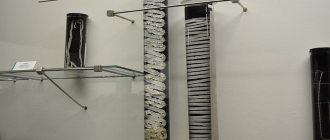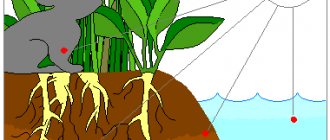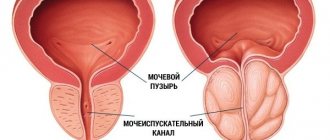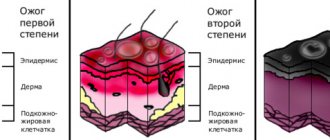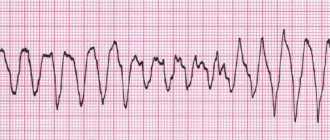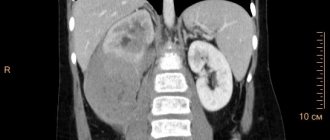Diphyllobothriasis is a chronic disease caused by Diphyllobothrium latum (broad tapeworm) . The parasite refers to tapeworms that enter the human body when eating infected fish.
It is one of the most common helminths in temperate countries. Infestation with the broad tapeworm threatens the development of various side symptoms. To avoid infection, it is important to familiarize yourself with all the features of Diphyllobothrium latum.
The causative agent of diphyllobothriasis
Diphyllobothrium latum (wide tapeworm) is the most common species of tapeworm, known to science since 1758.
Scientific classification:
- Type - Plathelmintes (flatworms)
- Class - Cestoidea (cestodes)
- Order - Pseudophyllidea (tapeworms)
- Family - Diphyllobothriidae (diphyllobothriidae)
- Genus - Diphyllobothrium (tape tapeworm)
There are 10 species of diphyllobothriids: broad tapeworm (Diphyllobothrium latum), small tapeworm (Diphyllobothrium minus), narrow tapeworm (Diphyllobothrium strictum), Tunguska tapeworm (Diphyllobothrium Tungussicum), Diphyllobothrium klebanovskii, Diphyllobothrium Dendriticum, etc.
In medical practice, the broad tapeworm is of particular importance.
Structure
The broad tapeworm is a fairly large helminth. Its length is from 2 to 10 meters, sometimes reaching 20 - 25 meters. It has a head, neck and body. The respiratory, digestive and circulatory systems are absent.
The head (scolex) is elongated and flattened laterally, ranging from 3 to 5 mm in length. On the head there are bothria (suction slits), with the help of which the parasite attaches to the mucous membrane of the small intestine. Bothria are located on the dorsal and ventral sides of the helminth.
The neck is short, up to 10 mm in length, non-segmented.
The body (strobila) consists of segments (proglottids), the number of which ranges from 3 to 4 thousand. At the head, the segments are short and wide, then as they mature, they lengthen. In the middle part of the strobilla, the width of the segments exceeds the length, which distinguishes this type of helminth from the tapeworm. The width of the segments is 1.5 cm. Proglottids are covered with special cells that have outgrowths that perform the function of nutrition and special openings through which enzymes are released that protect the parasite from the aggressive external environment. The muscular system is represented by circular and longitudinal layers.
Rice. 2 and 3. The photo shows the head of the broad tapeworm (on the left) and young and mature segments (on the right).
Rice. 4 and 5. The photo shows mature segments of the parasite. The brown color indicates the uterus with eggs that are released through a small hole.
Reproduction
The tapeworm is a wide hermaphrodite. There are no genital organs in the initial part of the body. In mature segments the reproductive apparatus is already present. It is represented by a rosette-shaped uterus filled with parasite eggs and testes located on the lateral surfaces of the segments. In the helminth, self-fertilization of each segment is observed, as well as cross-fertilization of 2 neighboring segments of the same or different individuals.
The testes are round in shape. The vas deferens opens on the lateral surfaces of the segments. The cirrus (copulation apparatus) is enclosed in a bursa (muscular sac).
The ovary has a bilobed shape and is located at the posterior edge. A straight vaginal tube stretches along the midline of the penis, which opens next to the male genital opening. The zheltochniki are located on the sides of the segments. The uterus is tubular, unclosed. Its loops are concentrated in the center of the segment. As the eggs mature, they enter the lumen of the small intestine and are excreted with the intestinal contents. One individual produces more than 2 million eggs per day.
Eggs
The eggs of the tapeworm are wide oval in shape, large, their size is 68 - 71 mm in length and 45 mm in width. The color is grayish-yellow. The surface is smooth and double-circuited. There is a cap on one of the poles, and a small tubercle on the other. An egg contains a large number of yolk cells. The formation of eggs occurs in the segments of the tail. Eggs are released into the external environment in an immature state. Their ripening occurs in freshwater bodies of water. A coracidium (embryo) is formed in the egg, which is released into the water after 6–16 days. The formation of the embryo occurs at temperatures above +150C. At lower temperatures, the embryo does not emerge from the egg, but remains viable for up to 6 months, in cesspools - up to 7 weeks. The development of eggs is possible in slightly salted water (river mouths). UV rays and disinfectants are harmful to eggs.
Rice. 6, 7 and 8. Diphyllobothrium latum eggs.
Rice. 9. The photo shows the release of the coracidium (embryo) from the egg of Diphyllobothrium latum
Routes of infection
You can become infected with tapeworm only through intermediate hosts – fish. Coracidia, which live in fresh water bodies, are not dangerous to humans. If such a larva enters the human body, then, as a rule, it will die without developing into an adult. For the survival of the parasite, all stages of development with intermediate hosts are necessary. Another route of infection is contact with infected fish flesh. Cleaning fish should be done with protective gloves, and the knife and cutting board should be thoroughly washed with hot water and disinfectant.
The source of infection does not become a sick person or animal, since the parasite eggs must go through all stages of development. To do this, they need to get into water and change two intermediate hosts. For the same reason, the process of self-infection (reinvasion) with diphyllobothriasis is impossible.
Life cycle of Diphyllobothrium latum
The life cycle of development of the broad tapeworm occurs with a change of intermediate, additional and final host.
Larval development
The eggs of the helminth are squeezed out of the uterus of a sexually mature segment located in the small intestine of a person. They enter the external environment with feces. One individual releases several million eggs per day, the viability of which lasts about 30 days. Continuation of development is carried out only in a freshwater environment. At a water temperature of +200C and in the presence of a sufficient amount of oxygen in the egg, the coracidium (ciliated larva) develops within 21 days. Next, the mature larva squeezes out the lid of the egg shell and enters the aquatic environment, where, depending on conditions, it can exist for 1 - 12 days. The coracidium has a spherical shape and ciliated cover, equipped with three pairs of hooks. In water, the larvae actively move and then either die or are swallowed by copepods, where further development of the helminth occurs.
The embryo does not develop at a temperature of +150C and below, but remains viable for six months.
Rice. 10. Larvae of the broad tapeworm.
First intermediate host
The first intermediate hosts of parasites are copepods of the order Copepoda, genera Acanthodiaptomus, Eudiaptomus, Diapthomus (D. gracilis, D. graciloides), Cyclops (C. strenuus, C. insignis, C. serrulatus).
In the intestines of crustaceans, coracidia get rid of cilia and membranes within 2 - 3 weeks and turn into procercoids - oblong larvae up to 60 microns long (primary tissue form), with three pairs of embryonic hooks at the ends.
Second intermediate host
The second intermediate host of helminths are predatory fish such as ruffe, perch, pike, burbot, grayling, pike perch, trout, eel, whitefish, omul, etc., as well as salmon fish (chum salmon, pink salmon, salmon) that swallow crustaceans. In the intestines of the fish, the crustaceans are digested and the procercoids are released. By boring through the intestinal wall, procercoids migrate to muscle tissue, liver, eggs and other internal organs, where within 4–5 weeks they reach the plerocercoid stage (the invasive stage for the definitive host). The larvae at this stage of development reach a length of 1 - 3, less often 5 cm and have a formed scolex and bothria (suction slits). Infected fish become dangerous to humans.
Rice. 11 and 12. Wide tape. Plerocercoids in the liver and intestines of trout.
Third intermediate (additional) host
The third intermediate host for the common tapeworm often becomes a peaceful fish, which serves as food for predatory fish, in whose bodies passive colonization of plerocercoids occurs. They penetrate the intestinal wall and settle into the internal organs and muscle tissue, where their further development occurs. Therefore, predatory fish pose a particular danger to humans if the technology for preparing dishes from them is violated.
Final owner
The final hosts of the parasites are humans and carnivores: dogs, rarely cats, pigs, otters, leopards, seals, walruses, as well as such wild animals as foxes, brown bears, arctic foxes, American minks, etc. Plerocercoids, getting into their thin intestines, attach to the mucous membrane and continue their development for 2 - 4 weeks, reaching the stage of a sexually mature individual.
The intestines are most often parasitized by one helminth, rarely by several; cases of parasitism of more than 100 individuals have been described. Parasites live in the intestines for 10, 20 or more years, being a constant source of eggs (more than 2 million per day), which are constantly excreted in feces into the external environment.
Rice. 13 and 14. The definitive hosts of parasites are humans and carnivores, including wild ones.
Photo and video
Larvae in fish:
Infected char
Cysts (encysted larvae) in the intestines
Cysts on the outside of the intestine
Also in the intestines
Unencapsulated larva. In fact, this is not a broad tapeworm, but its close relative, also from the genus Diphyllobothrium. But only a specialist can distinguish them, since they look the same.
Adult live worm:
A wide tapeworm inside a person during a colonoscopy
Epidemiology
Prevalence of the disease
Diphyllobothriasis is most common in regions with large freshwater bodies of water in countries with temperate and cold climates - the Great Lakes regions of the USA, Canada, Alaska and Northern Europe.
Foci of helminthiasis are registered in the same way:
- In the Eastern Mediterranean.
- In the Baltics.
- In Russia: Karelia, the Gulf of Finland region, Krasnoyarsk Territory, Kola Peninsula, Volga region.
- In Ukraine: the Danube delta, the zones of the Kakhovka and Kremenchug reservoirs.
- In Moldova: lower reaches of the Dniester and Prut.
Foci of helminthiasis appear where cool lakes are polluted with wastewater. In wastewater treatment, infection is much less common. The presence of a fresh reservoir, a sufficient concentration of oxygen in the water, shallow water (well warmed by the sun) and a high number of crustaceans contribute to the spread of invasion. Salt water and water temperatures above +200C are destructive for crustaceans.
Of primary importance are:
- Sanitary condition of reservoirs.
- Food habits of the population.
Human infection
Infection occurs when a person eats freshwater predatory fish infected with larvae:
- raw (planed),
- poorly thermally processed (insufficiently boiled or fried),
- poorly salted fish and caviar (often freshly prepared pike).
Particularly dangerous are ruffes, perches, pike, burbot, grayling, pike perch, trout, eel, whitefish, omul, etc., as well as salmon fish (chum salmon, salmon, humpback salmon).
A person is not a source of infection for other people and does not pose an epidemiological danger.
Plerocercoids die at low temperatures: after 24 hours at -150C, after 3 days at -100C, at -4 -60C after 5 - 9 days. Survive at high temperatures. The protein coagulation zone is from +50 to +55°C.
At-risk groups
Susceptibility to the disease is universal. Those most often affected are fishermen, cannery workers, tourists, and lovers of raw fish kebabs.
Rice. 15. Wide tape. Plerocercoids in the liver and intestines of trout.
Pathogenesis
After the larva (plerocercoid) has entered the small intestine of a person, it attaches to its wall (mucous membrane) with the help of bothria (suction cups) and, feeding on the contents of the intestine, begins to develop. Having reached sexual maturity, the helminth begins to discard mature segments filled with eggs into the intestinal lumen. The pathogenic effect of tapeworm is mechanical action, the development of neuro-reflex and toxic-allergic reactions, the development of vitamin B12 and folic acid deficiency.
Mechanical impact. Suction of the parasite to the intestinal wall leads to disruption of the integrity of the mucous membrane, resulting in impaired blood circulation, nerve conduction and digestion. The mucous membrane ulcerates, its atrophy and necrosis develop.
Accumulations of helminths during intensive infestation in some cases lead to intestinal obstruction.
Endogenous hypovitaminosis. The absorption of a large amount of nutrients, vitamins and microelements (including iron) by the helminth leads the patient’s body to nutritional depletion of varying degrees of severity in the body (strobila) of the parasite. In severe cases, the development of megaloblastic anemia is recorded, which is associated with vitamin deficiency B12 (cyanocobalamin) and B9 (folic acid). Immature forms of red blood cells enter the peripheral blood. The number of red blood cells and their saturation with hemoglobin decreases in the blood.
Nervous-reflex influence. With helminthiasis, irritation of interoreceptors occurs, which leads to the formation of viscero-visceral reflex reactions and neurotrophic disorders. The functioning of the digestive tract is disrupted, paresthesia and gait instability appear.
Toxic-allergic influence. The waste products of the tapeworm are absorbed from the intestines and enter the blood, which leads to a toxic-allergic restructuring of the body and suppression of the immune response. Eosinophilia is recorded in the blood, significantly expressed at the early stage of helminthiasis.
How does the drug work?
The principle of action of this anthelmintic drug is to improve the permeability of helminth cell membranes to calcium ions.
Active substance praziquantel:
- leads to generalized muscle spams of parasites;
- promotes the uptake of glucose by helminth cells;
- reduces glycogen levels and stimulates the release of various lactic acid compounds;
- ensures long-term paralysis and inevitable death of parasites.
Classification of the disease
The disease is classified according to its course, the presence of complications and the severity of helminthiasis.
- According to the variants of the course, latent (hidden) and manifest forms of diphyllobothriasis are distinguished.
- According to the presence of complications - uncomplicated and complicated forms.
- By severity - mild, moderate and severe.
Rice. 17 and 18. Plerocercoids of the broad tapeworm in the body of freshwater fish.
What types of parasites does Biltricide help with?
It is recommended to take the drug Biltricid:
- For various ailments caused by trematode and cestode parasites.
- For pathogens of opisthorchiasis, cat fluke, various schistos.
Affected by Biltricide:
- Chinese fluke;
- Siberian fluke;
- liver fluke;
- cat fluke;
- wide tape;
- dwarf tapeworm;
- Menson's intestinal schistosome;
- giant fluke;
- pulmonary fluke.
To more accurately determine which parasite the infection occurred, you need to undergo a series of necessary tests. Only after identifying a specific parasitic infection can a medicine be prescribed.
Clinic of diphyllobothriasis
The incubation period for the disease ranges from 20 to 60 days. The clinical picture of diphyllobothriasis depends on the number of parasites and the time they remain in the patient’s body. Most cases of helminthiasis are asymptomatic or minimally symptomatic. Such patients are identified accidentally by the presence of segments or “ribbons” of helminths in the feces. During the survey, complaints such as nausea, belching and abdominal pain are recorded.
In the case of a typical course of helminthiasis, complaints appear indicating pathology of the digestive tract, nervous and hematopoietic systems:
- Signs of astheno-neurotic syndrome appear: increased fatigue and decreased performance, headaches, dizziness, sleep disturbance.
- Appetite worsens, nausea and vomiting, abdominal pain, flatulence, stool instability (diarrhea or constipation), salivation, perversion of taste and a metallic taste in the mouth appear. In 80 - 90% of patients, a decrease in the secretion of gastric juice is recorded, up to achylia.
- Paresthesia appears in the absence of an external stimulus.
- Skin rashes of an allergic nature (urticaria).
- Lack of effect from treatment for chronic diseases.
- Possible causeless low-grade fever.
- Epileptiform seizures (rare).
In severe cases of diphyllobothriasis, the following are noted:
- Increasing signs of astheno-neurotic syndrome.
- Enlarged liver and spleen.
- Increased sensitivity disorders (paresthesias).
- Decreased blood pressure, increased heart boundaries and tachycardia.
- With a long course of helminthiasis, obstruction of the small intestine sometimes develops, associated with the accumulation of parasites.
- In 2 - 3% of cases, B12 deficiency anemia develops. Weakness, fatigue and drowsiness increase, dizziness, tinnitus and palpitations appear. The face becomes puffy and pale, and sometimes swelling appears in the legs. The number of red blood cells and hemoglobin sharply decreases.
- With fresh invasion, eosinophilia is detected in the blood
- Glossitis may develop: bright red spots and extremely painful cracks appear on the tongue (“scalded tongue”). Over time, the severity of the phenomena decreases, the papillae atrophy, the tongue becomes shiny and smooth (“varnished”). In some cases, the same changes appear on the mucous membrane of the palate, cheeks, pharynx and esophagus.
- The phenomena of paresthesia are increasing. Unsteadiness of gait is noted. Funicular myelosis sometimes develops.
Diphyllobothriasis is somewhat more severe in pregnant women:
- Signs of severe anemia are often recorded.
- The risk of developing toxicosis increases.
- An increased risk to the fetus is observed in the first trimester: malnutrition, oxygen starvation, delayed development of the nervous system and general development.
Rice. 19. With diphyllobothriasis, glossitis may develop.
Prevention
The prognosis of the disease is favorable. Preventive measures are very simple:
- When preparing and cleaning fish, use protective gloves;
- do not touch raw fish, its meat and caviar with your hands;
- carry out high-quality heat treatment of fish;
- Avoid eating raw, salted, dried and smoked fish.
The larvae of the broad tapeworm die at a temperature of -15°C for 24 hours, as well as at -10°C for 3 days, and at a temperature of -4-6°C for 9-10 days. High temperatures reliably kill the larvae; they die already at a temperature of + 55°. Therefore, fish should be fried for 10 minutes on one side, and large pieces of fish should be fried for 30–40 minutes. When salting fish, the salt content in the final product must be at least 9%.
Complications
Of the complications of diphyllobothriasis, the following are especially important:
- Intestinal obstruction (mechanical obstruction) associated with a large number of helminths. The condition requires surgical intervention.
- Migration of proglottids into the gallbladder with subsequent development of inflammation of the organ.
- Development of B12 deficiency anemia.
- Funicular myelosis.
The prognosis of the disease is generally favorable. Worsens with severe pneumonia. Timely detection and adequate treatment leads to complete recovery.
Patient reviews about the medicine
In most cases, people who have taken Biltricide give positive reviews about it:
- The drug relieves allergic manifestations caused by parasites.
- This medicine allows you to easily and quickly cure opisthorchiasis. The treatment regimen for opisthorchiasis is here.
- It is better to combine Biltricid tablets with the use of folk remedies. This will help avoid some of the side effects caused by the medicine.
Experts in the field of helminthology say this:
- Biltricide is an indispensable tool for the treatment of helminthic infestations. It copes with a wide variety of helminths.
- This remedy is also prescribed to children after 4 years of age.
- Although this drug can cause side effects, patients can easily tolerate its effects.
- Doctors often recommend that treatment be carried out in a hospital setting, under their direct supervision.
Diagnostics
Diagnosis of diphyllobothriasis is based on epidemiological history, clinical picture of the disease, data from laboratory methods and direct visualization of helminth segments and eggs in feces (the main diagnostic method).
A general blood test reveals eosinophilia, relative lymphocytosis, and in severe cases, the level of hemoglobin and red blood cells decreases.
In a biochemical blood test with the development of B12 deficiency anemia, a decrease in the level of folic acid and vitamin B12 is noted, and the level of total bilirubin increases.
In a native smear, coproovoscopy reveals numerous helminth eggs.
In the feces there are fragments of strobilla of the common tapeworm.
Diphyllobothriasis should be distinguished from other parasitic diseases, Addison-Birmer anemia, hemolytic anemia, and other pathologies of the gastrointestinal tract.
Diagnosis
Diagnosis of infection
Diagnosis of infection with broad tapeworm is based on obtaining data from the patient and laboratory tests. At the first stage, the attending physician interviews the patient, records the facts of eating fish that have not undergone sufficient heat treatment, and staying in areas where the risk of infection is increased.
At the second stage, it is determined which symptoms of the disease have already manifested themselves and the degree of their intensity. Often, when visiting a doctor, patients complain about the presence of tapeworm segments in their stool.
At the next stage, the patient is sent for a general blood test, followed by copro-ovoscopy, which makes it possible to detect fragments of the parasite and confirm the presence of the disease.
Treatment of diphyllobothriasis
Treatment is mainly carried out on an outpatient basis; patients with severe forms of helminthiasis are treated in a hospital setting. No special diet required. If there is difficulty in bowel movement, laxatives are prescribed. Specific treatment consists of taking antiparasitic drugs. Treatment is carried out for 1 day: Praziquantel (Biltricid, domestic analogue of Azinox) 60 - 75 mg/kg in 3 doses with an interval of 4-6 hours.
After treatment, you should make sure that the helminth is excreted in the feces.
In case of development of B12 deficiency anemia, diet, use of iron supplements, cyanocobalamin and folic acid are indicated.
After recovery, those who have recovered from the disease are subject to dispensary observation for 3 - 6 months with monthly 2-fold monitoring of stool analysis for worms.
Rice. 20. Externally, the wide tapeworm is similar to the tapeworm, but unlike it, in the middle part of the body the width of the segments exceeds the length.
special instructions
Special instructions when taking the drug:
- The use of Biltricid does not require the use of laxatives.
- In patients with hepatosplenic schistosomiasis and impaired liver function, a slowdown in the metabolism of praziquantel is noticed (inpatient treatment under medical supervision is required).
- In patients with schistosomiasis of the brain, no contraindications to the use of the drug were identified.
- Patients with trematodiasis and schistosomiasis should be treated in a hospital.
- Treatment with praziquantel requires mandatory cessation of breastfeeding (during the course of treatment for 2 days).
- The product reduces concentration - vehicle drivers should know this.
Biltricide is an inexpensive and powerful medicine against trematodes, and opisthorchiasis, which is very common in our time. The main thing is to adhere to dosages to avoid side effects and allergic reactions. If you have heart pathologies, you should not be afraid to undergo treatment in the hospital.
Morphology
The adult worm is composed of three fairly distinct morphological segments: the scolex (head), the neck, and the lower body. Each side of the scolex has a slit-like groove, which is a bothrium for attachment to the intestine. The scolex attaches to the neck, or proliferative region. From the neck grow many proglottid segments which contain the reproductive organs of the worm. D. latum
is the longest tapeworm in humans, averaging ten meters long. Adults can shed up to a million eggs a day.
In adults, proglottids are wider than they are long (hence the name broad tapeworm
). As in all pseudophyllid cestodes, the genital pores open midventrally.
Side effects
Negative phenomena after Biltricide are very rare; if the correct dosage is observed, they do not occur. Side effects, as a rule, are so insignificant that they do not cancel further treatment with the drug.
The following unpleasant effects are likely:
- Nausea, nagging pain in the lower abdomen, poor digestion, decreased appetite, diarrhea.
- Drowsiness, migraine, physical weakness, chills, cardiac arrhythmia.
- In rare cases, skin allergies (urticaria, rashes, redness) occur.
Life cycle
Life cycle of D. latum.
Click the image to see full-size.
Adult tapeworms may infect humans, canids, felines, bears, pinnipeds, and mustelids, though the accuracy of the records for some of the nonhuman species is disputed. Immature eggs are passed in feces of the mammal host (the definitive host, where the worms reproduce). After ingestion by a suitable freshwater crustacean such as a copepod (the first intermediate host), the coracidia develop into procercoid larvae. Following ingestion of the copepod by a suitable second intermediate host, typically a minnow or other small freshwater fish, the procercoid larvae are released from the crustacean and migrate into the fish's flesh where they develop into a plerocercoid larvae (sparganum). The plerocercoid larvae are the infective stage for the definitive host (including humans).
Because humans do not generally eat undercooked minnows and similar small freshwater fish, these do not represent an important source of infection. However, these small second intermediate hosts can be eaten by larger predator species, for example trout, perch, walleye, and pike. In this case, the sparganum can migrate to the musculature of the larger predator fish and mammals can acquire the disease by eating these later intermediate infected host fish raw or undercooked. After ingestion of the infected fish, the plerocercoids develop into immature adults and then into mature adult tapeworms which will reside in the small intestine. The adults attach to the intestinal mucosa by means of the two bilateral grooves (bothria) of their scolex. The adults can reach more than 10 m (up to 30 ft) in length in some species such as D. latum,
with more than 3,000 proglottids. One or several of the tape-like proglottid segments (hence the name tape-worm) regularly detach from the main body of the worm and release immature eggs in fresh water to start the cycle over again. Immature eggs are discharged from the proglottids (up to 1,000,000 eggs per day per worm) and are passed in the feces. The incubation period in humans, after which eggs begin to appear in the feces is typically 4–6 weeks, but can vary from as short as 2 weeks to as long as 2 years. The tapeworm can live up to 20 years.
